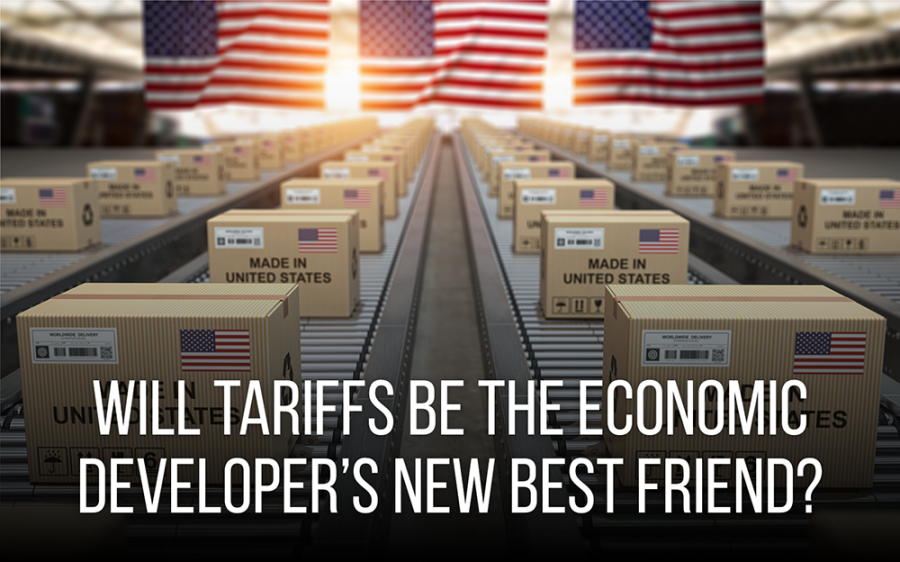
Blog
Will Tariffs be the Economic Developer’s New Best Friend?

Between 1798 and 1913 tariffs were 50 to 90% of the United States federal income. Today approximately 70% of products enter the U.S. duty free. Tariffs have been used to protect local industries. The higher cost of imports encourages people to buy products made in America. This is especially important if an industry can’t compete with international companies.
There is also the supply chain argument. When tankers were sitting offshore and products weren’t getting to consumers, many argued if we made more in America, we wouldn’t have to worry about foreign suppliers.
Many countries have been charging higher tariffs on the U.S. than have been charged by the U.S. For example the U.S. charges a 3% tariff on India. India charges 9.5% on U.S. goods. The European Union charges the U.S. 5% and the U.S. charges them 3.4%. But the EU charges 10% on U.S. cars while the U.S. only charges 2.5% on EU cars.
Tariffs are encouraging companies to come back to the U.S. creating investment and jobs. According to various news outlets, since the new administration announced the reciprocal tariff policy, the following companies have announced hundreds of billions of dollars of new investment in the U.S. creating tens of thousands of new jobs, maybe more.
Apple has committed to invest $500 billion in the U.S. over the next five years, hire 20,000 new employees, open a server factory in Texas next year, and a manufacturing academy in Detroit.
The Wisconsin-based company Clarios says it will invest $6 billion into expanding U.S. manufacturing. Clarios makes vehicle batteries.
Johnson & Johnson plans to invest $55 billion over four years to build manufacturing facilities in the U.S.
Honda said that it would move its production of its electric Civic model from Mexico to Indiana because of Trump's tariffs on Mexico.
Nvidia said it would invest approximately half a trillion dollars in the U.S. to make American-made chips and electronics over the next four years.
Taiwan Semiconductor Manufacturing Company, the world’s largest chipmaker, will invest more than $100 billion in new chip-making facilities, in addition to the one it currently operates in Arizona.
Economic developers in these cities/states are no doubt thrilled with the investment and job creation in their communities. The cost to companies is obviously lower if they make their product in the U.S. as opposed to making it in Mexico, for example, avoiding tariffs. The opportunity is good for them and good for job creation in the U.S., as well as alleviating some of the dependence the U.S. has on foreign countries including adversaries like China. Economic developers are no doubt using this new tool to encourage repatriation of manufacturing companies as well as attracting new businesses to the United States.
Kelly Murphy Redd, CEcD, Murphy Redd Marketing
